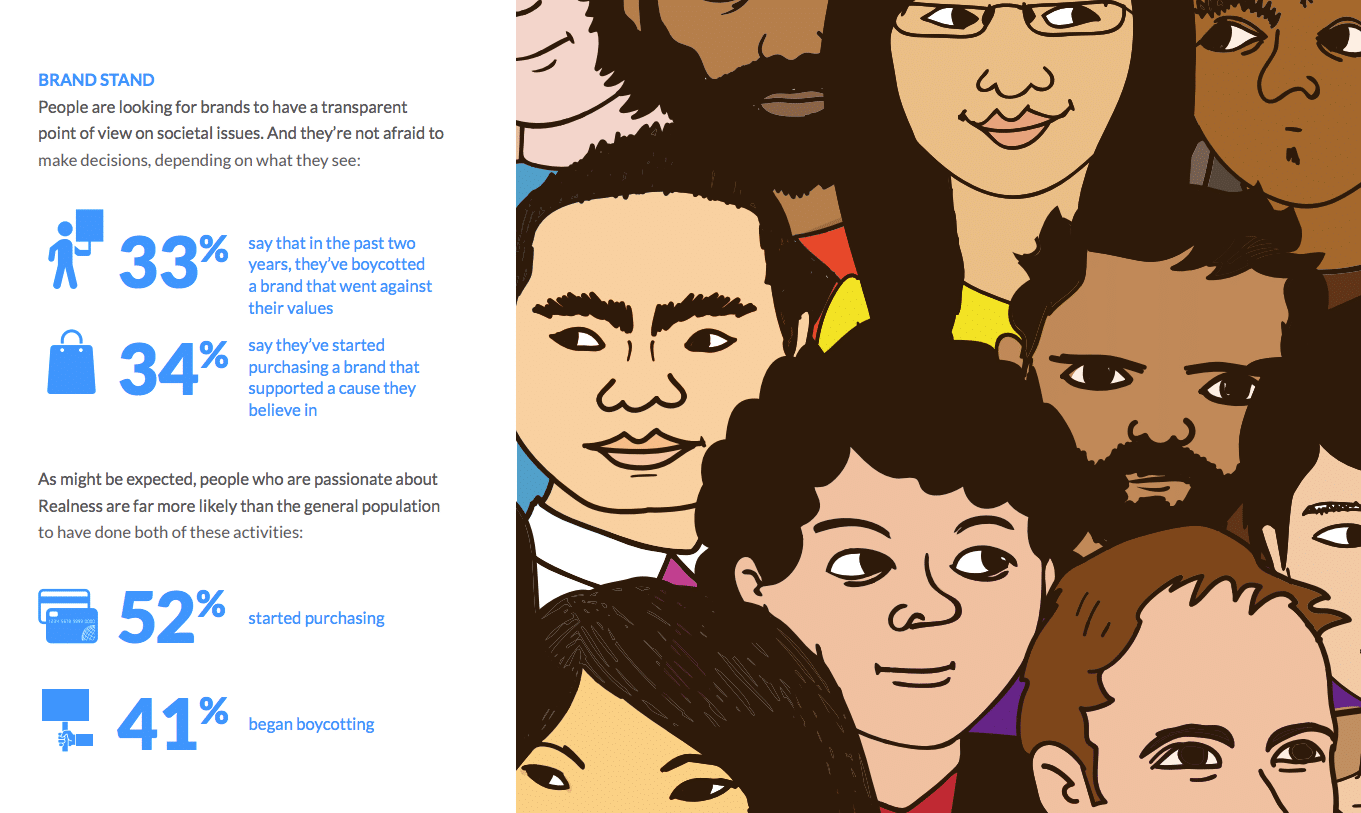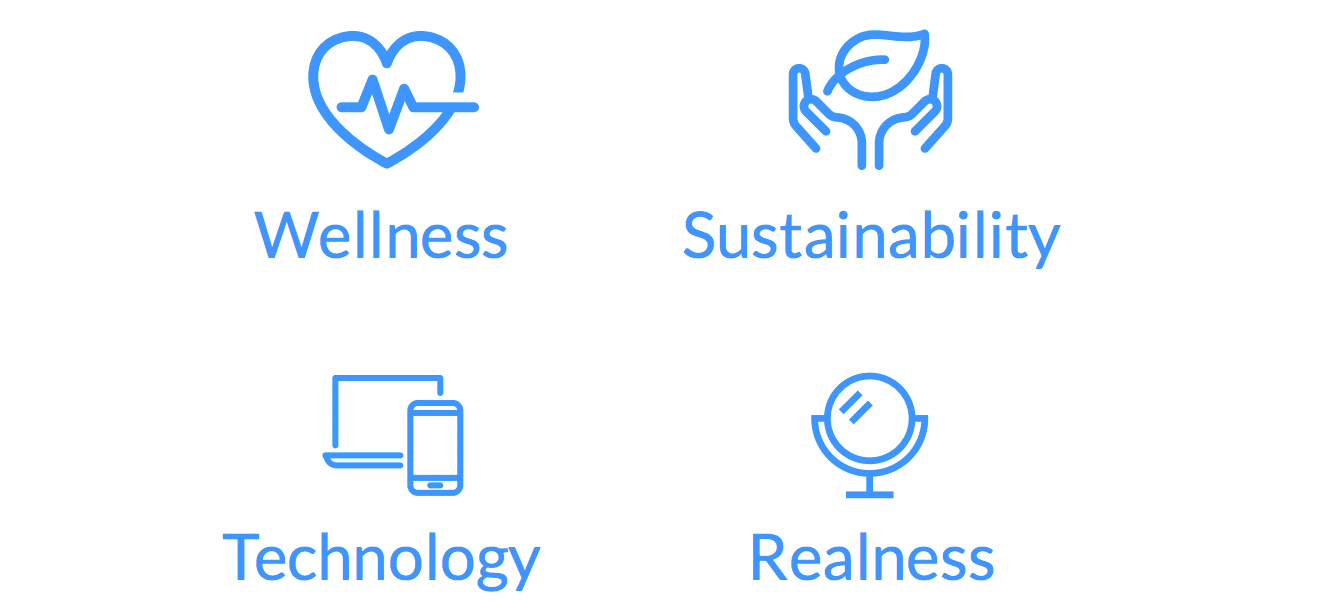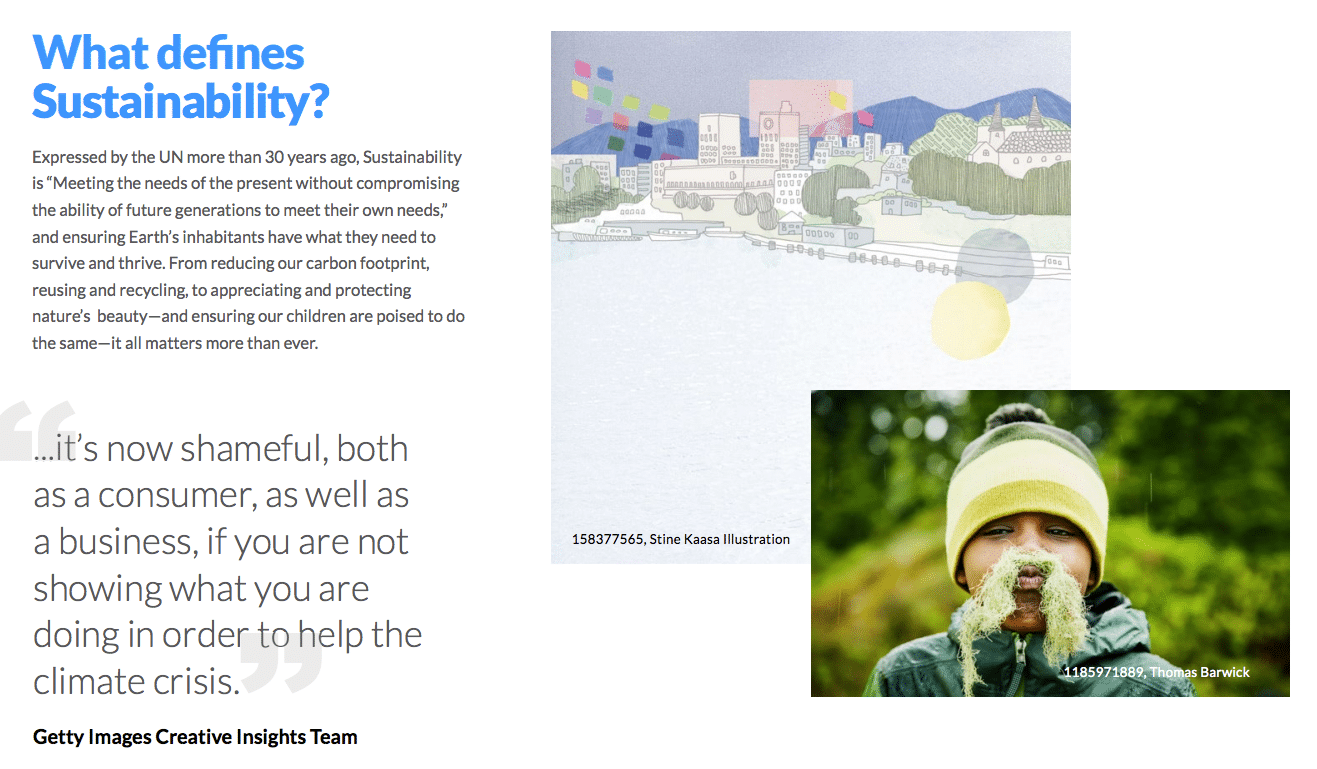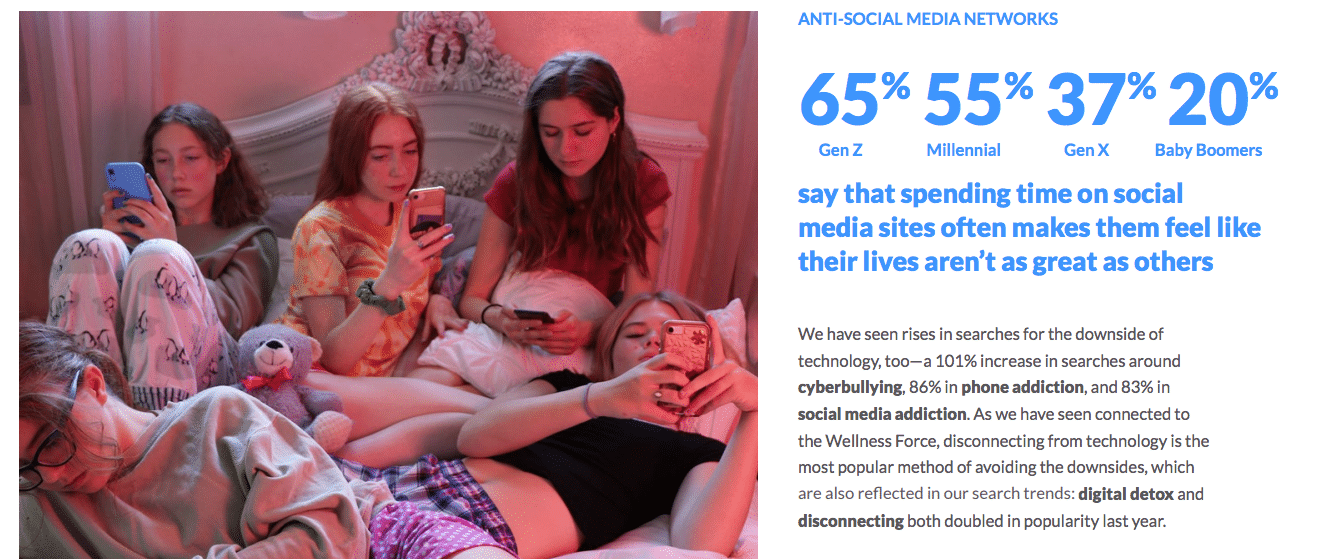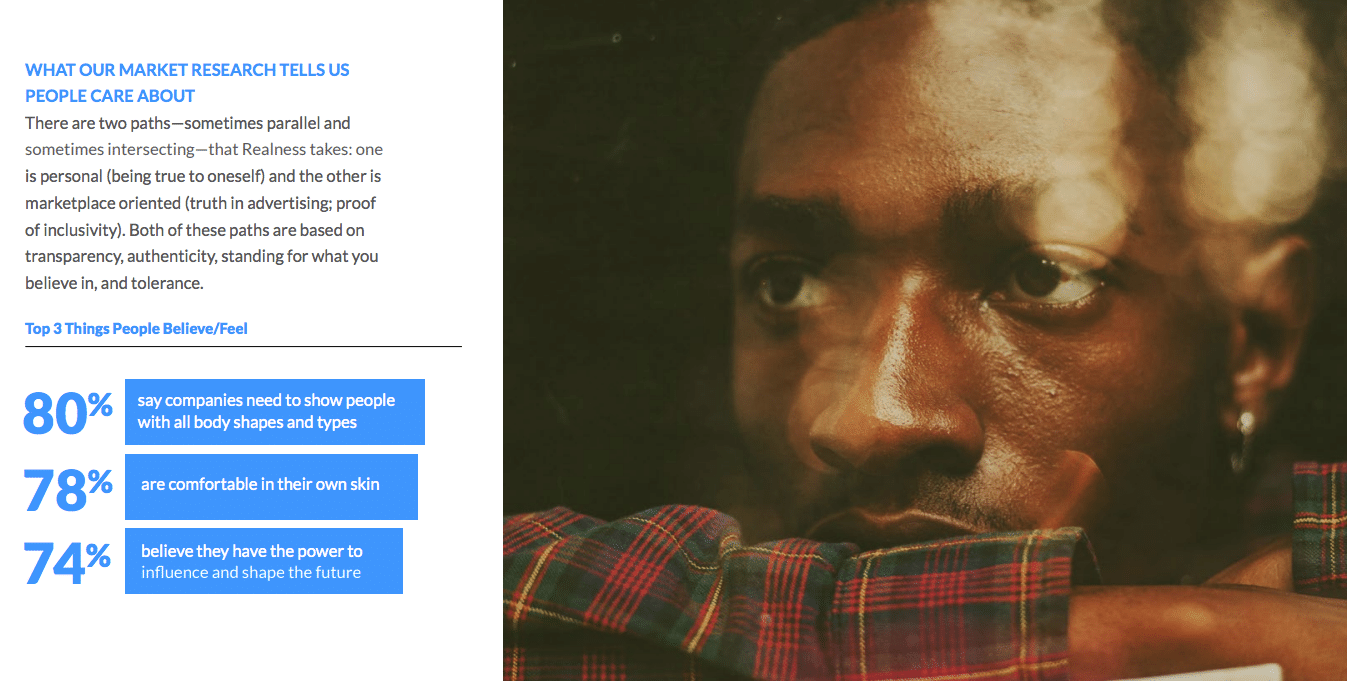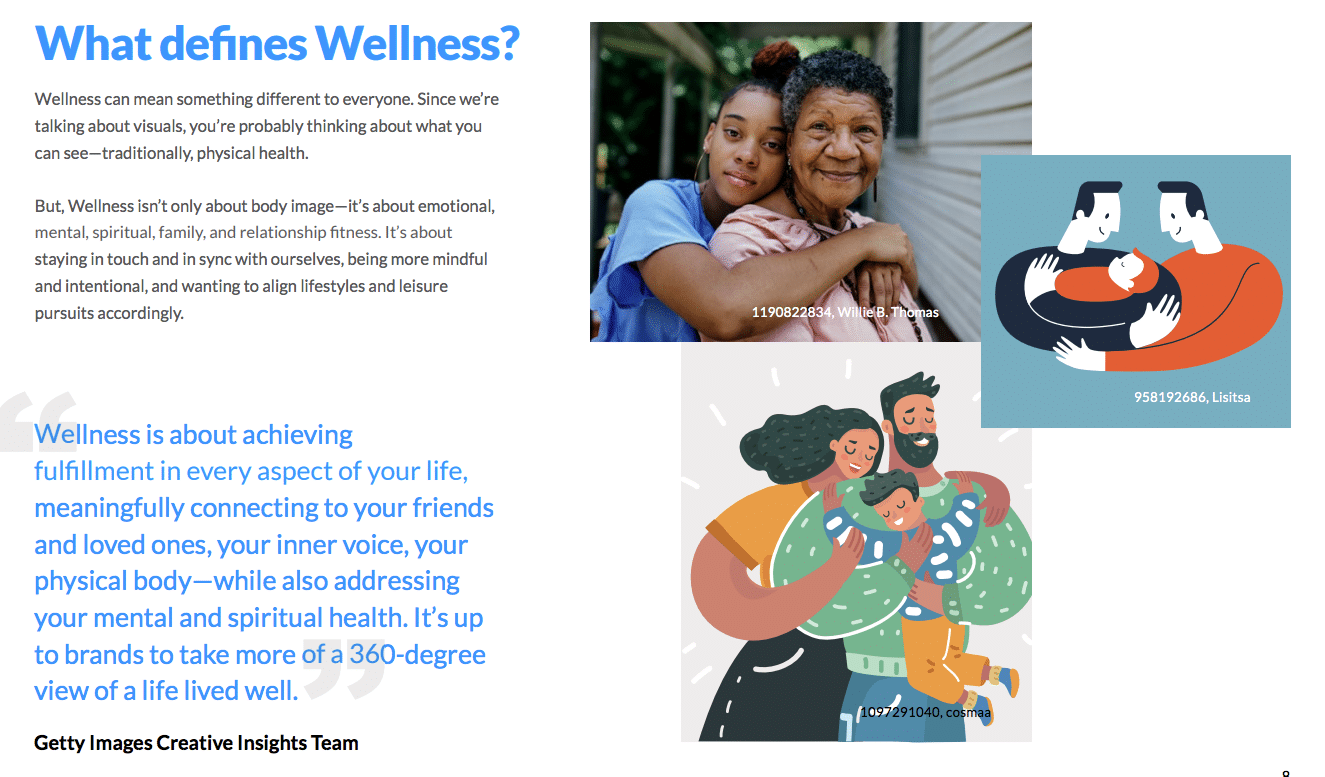New research from Getty Images reveals that while people tend to place high value on the wellness of themselves, their family and the Earth, their intention does not always necessarily translate into action—which presents a unique opportunity for brands to engage and assist consumers in bridging the gap between intention and action.
The firm’s new Visual GPSreport, in conjunction with global market research firm YouGov, looks at the key forces that drive consumer engagement and purchasing behavior across geographies, generations, gender and employment, delivering new insight into what today’s consumers care about so brands can better choose visuals that will resonate with them.
“We live in an increasingly visual world. Having the perfect image, video, or illustration can mean the difference between connecting with your audience or simply being bypassed,” said Ken Mainardis, senior vice president of content at Getty Images, in a news release. “It can be difficult to choose visual content that will resonate with your target consumer, unless you understand what’s important to your customers and what drives their decision making—this is the problem Visual GPSseeks to solve.”
The initial findings surface several pressing issues, most notably highlighting the disconnect between intention and action around sustainability. Of the over 10,000 people surveyed, 92 percent of respondents said they believe the way we treat our planet now will have a large impact on the future, and yet 48 percent also say that although they know they should care more about the environment through their purchasing habits, convenience takes priority.
“Our research shows us there is an opportunity for companies and brands to help consumers bridge the gap between their attitudes and their actions,” said Dr. Rebecca Swift, global head of creative insights at Getty Images, in the release. “Visual GPS shows us that sustainability is a universal concern across generations, gender and regions—the potential for positive action is huge but consumers won’t engage if brands are not speaking to these issues in authentic visual terms.”
The research explores how consumers are influenced by four key “Forces”—Technology, Sustainability, Realness and Wellness—and what that means in terms of their decision making. Each of the Forces reveal important findings around what concerns consumers and how brands and businesses can respond.
Sustainability
“We’ve found evidentiary proof that sustainability is important to consumers of all ages across geographies and cultures, but sustainability issues collide with purchases that bring enormous pleasure and help improve wellbeing,” Dr. Swift said. “Our search data has seen huge increases in interest for reusable coffee cups, straws, water bottles, etc. This has led to the need to rethink what lifestyle and business visual content looks like. Often bottles, cups, and straws are small elements of a larger scene, but it’s important to rethink what’s in the image or video and whether it meets the modern sustainable standards of consumers.”
Key findings include:
- A “consumption conundrum” of sorts. Of those surveyed 81 percent see themselves as eco-friendly but only 50 percent say they only buy products from brands that try to be eco-friendly.
- Consumers who are passionate* about sustainability are likely to pay 10-15 percent more for products or services from companies that:
- Use sustainable practices
- Are aligned with their values
- Have transparent business practices
- Care about the wellbeing, safety, and security of customers.
Technology
“Of all the driving forces in people’s lives today, technology is arguably the one that creates the greatest amount of dynamic tension,” said Dr. Swift. “Visual GPS findings suggest that although people rely on technology to help them manage their lives and connect with loved ones, there’s a fear that privacy is at risk and concern about becoming lost in our screens at the expense of our relationships.”
“We are seeing the language of technology change as quickly as tech itself—and that holds true of visual expectations—particularly when you work in a cutting-edge field,” Dr. Swift added. “Staying current is important, as is understanding technology’s benefits and drawbacks in the way they’re expressed visually.”
Key findings include:
- On the bright side, 79 percent of those surveyed say technology makes them feel connected to those that matter most. On the downside, 41 percent say some of their relationships have been damaged by the use of technology.
- The younger you are, the more likely you are to feel as though your life isn’t as great as the lives of others because of time spent on social media, with 65 percent of GenZ, 55 percent of Millennials, 37 percent of GenX and 20 percent of Baby Boomers stating they believe this. Taken as a whole, 42 percent of people feel this way.
- On visualizing technology, Getty Images customer search data shows 62 percent of brands are looking to depict technology benefiting or working alongside humans.
Realness
“There are two paths—sometimes parallel and sometimes intersecting that Realness takes: one is personal—being true to oneself, and the other is marketplace oriented—truth in advertising; proof of inclusivity,” Dr. Swift said. “Both of these paths are based on transparency, authenticity, standing for what you believe in and tolerance. Consumers no longer accept information as evidence and this is particularly true if a brand has taken a stand, supported a cause, promised sustainability, etc. Taking people “behind the scenes” and providing a 360 view satisfy consumer demand for transparency.”
Key findings include:
- People want to see realness in the visuals that surround them, with 80 percent saying companies need to show people with all body shapes and types.
- 68 percent of respondents say it’s important to them that the companies they buy from celebrate diversity of all kinds, with younger people, specifically Millennials and GenZ, strongly feeling this way (76 percent) followed by GenX and Baby Boomers (61 percent).
- People are using their purchasing power to make a stand on the issues they care about with 33 percent saying they have boycotted a brand that went against their values in the past two years and 34 percent saying they have started purchasing a brand that supported a cause they believe in. 74 percent want to know what goes on behind the scenes when a product is produced.
Wellness
“Although the assumption might be that people tend to value physical health over mental health, Visual GPS findings suggest that not only do people place a high value on both (88 percent and 90 percent, respectively), but an almost equally high value,” explains Dr. Swift. “Historically, brands have expressed wellness as physical health, but we’re now seeing a move toward visual expression of how we facilitate wellness in our lives, such as an increased desire to celebrate the good in life with our friends and family or engage in exercise with friends.”
Other key findings include:
- People care most about the health and wellbeing of family members (61 percent) ahead of their own personal health and wellbeing (60%) and financial security (58 percent). People worry most about dishonesty (50 percent), people being unkind (44 percent) and how we treat our environment and inequality (39 percent).
- When it comes to physical health, we see near-equal generational participation. “Exploring concepts around physical and emotional wellness is what I’d consider a win-win for brands,” Dr. Swift said. “In fact, roughly nine out of ten people support discussion around mental health more broadly.”
Download the full report here.
The Getty Images Creative Insights team—comprised of artists, curators, archivists, futurists and art directors—initially identified the key Forces through a combination of interviews, observations and visual analysis, before embarking on a custom study surveying more than 10,000 people in 13 languages across 26 countries, to provide further context around the concept of visual representation.


